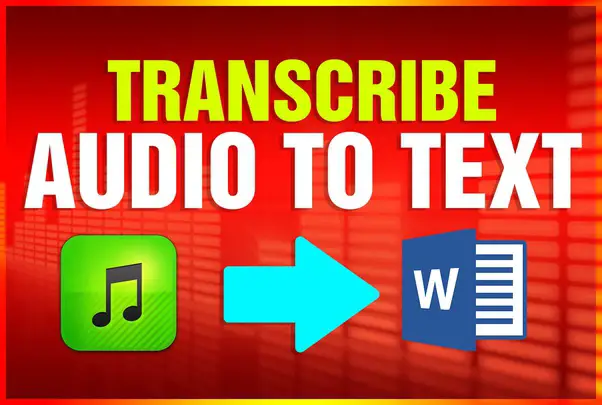
When is a dictation considered poor quality?
In the transcription work, you will encounter some bad quality dictation. And what can you do when you receive a poor-quality audio file to transcribe?
Poor-quality dictation includes background noise, muffled dictation, overlapping conversations, and speakers that are recorded at different volumes.
Any background noises on audio can make it more difficult for the transcriptionist to hear what is being said and transcribe accurately. A bad audio recording may contain too many inaudibles to get a useful transcript.
Ideally, all recordings that will need to be transcribed, including interviews, and focus groups, should be conducted in a quiet setting, without noises from traffic, ringing telephones, air conditioners, and heaters. However, recordings are often done in less than perfect conditions. When an interview has background noise or the microphone is not placed near the interviewees, the interviewer’s questions might be clear but the interviewees’ answers may not be. This is a common challenge when transcribing group discussions and other recordings involving multiple people.
So, what should you do when you get a bad-quality recording?
Where encountering poor-quality audio, review the quality of the recording and try some of the following methods to see if you can understand what’s said better.
4 tips to make it easier to transcribe bad quality audio.
- Listen with a good-quality headset or earphones. A good quality headset will definitely help. Headphones give you better sound, will help you hear better what’s being said, and will make it easier to transcribe as accurately as possible. The Spectra USB transcription headset and the Spectra transcription earbuds are popular headsets for transcription.
- Slow down and speed up the recording may help to distinguish the words better. Slowing the audio down often helps with clarity issues.
- Enhance the audio with a sound editor. You’ll only need to use a sound editor in rare situations where hard-to-hear dictation must be recovered. Audio and sound editors can remove background noise and enhance the audio so you can hear the voices better and make it easier to transcribe bad quality audio. Audacity, a free sound editor, can remove noise and clean up the sound.
- The free transcription software, Express Scribe has an audio clean-up tool that can eliminate background noises but sound editors can do an even better job.
How to indicate inaudible words
How should a transcriptionist handle inaudibles?
If a section of the audio is hard-to-hear or if you don’t understand one or more words or sentences, pay attention to the context to help understand what is said, but don’t guess!
- Instead, mention [inaudible] or [unintelligible] or [several inaudible words]. It’s even better to add the timestamp to the [inaudible], e.g. “[inaudible at 00:13:42]” so that the reader can quickly find and listen to the inaudible part.
- It is better to indicate that words are inaudible than to transcribe incorrect words. “Inaudible” means that you can’t hear it, while “unintelligible” means that you hear sounds but can’t make them out but most people just use the term inaudible for both situations.
- Some transcriptionists use [] while others use (). Some companies or clients may instruct you to indicate inaudible differently. For example, one company is instructing their transcriptionists to use (“word indistinct”), (“3 words indistinct”) (“passage of about 20 words indistinct”). Another company uses [indiscernible].
- Words can also be unclear if a person interrupts (put –) or tails off (put …).
Communicate with your client
When you still can’t understand a recording when using a good headset and you’ve tried to slow down the recording, then you definitely have a poor recording.
After assessing audio that will be hard to transcribe, inform your client of the problem. Tell them if you think the audio is viable for transcription. Let them know that you can attempt to enhance the sound (at the client’s expense) and try to transcribe the audio but make them aware that it will take more time, cost more and the transcript will have a lot of gaps. Then ask if they want to proceed with the transcript and pay the extra money.
Some clients understand bad quality audio, and the difficulty this brings during transcription, while others are not. Some clients may want you to transcribe the poor-quality dictation and try to capture as much as you can–even if you’re only going to transcribe part of the recording. Others may decide that it’s not worth the cost.
When you have to rewind and re-listen repeatedly, it can take a long time and be frustrating to transcribe. Your typical poor audio will just be a little more challenging to transcribe than good quality audio, take longer, and have more in audibles. But a few poor quality audios you’ll receive are going to be bad enough to turn them down.
Transcriptionists have to calculate the extra time and effort it will take when pricing a bad recording.
To avoid getting bad quality audio for transcription, give your clients tips on how to create good quality recordings and inform them that the quality of the audio file will affect the quality of the transcript, the difficulty to transcribe audio, and the transcription cost.
Challenges Of Transcribing Audio To Files
Challenge 1: Resource Selection and Retention
Depending on the language for transcription and the deadlines, it can be a challenge to find local resources for transcription and quality assurance who can remain dedicated for the duration of the project. For most transcription projects, dedicated resources are needed to meet the client’s deadlines.
Teams are needed per language:
- Resource Manager to identify, select and interview suitable resources for the project
- Transcribers to transcribe the audio
- Lead QA and linguist to run the Quality Assurance checks
- Senior project manager to ensure the overall smooth running of the project
Producing professional-quality transcription can take a considerable amount of patience and effort. Depending on the transcriptions needed, the work can be tedious and even frustrating for resources, and for this reason, among others, some resources may drop out during the project, meaning the interview and training process can be ongoing throughout the life cycle of a project.
Challenge Two: Quality of the Audio
Below are some factors which can influence how difficult audio content is to transcribe:
- The quality of the audio
- Whether the dialogue is scripted (usually marketing content) or unscripted (call centre conversations for example)
- The nature of the content of the audio
- The Quality of the speaker’s voice
- Different dialects and accents
- Background noise
Because, mostly, the audio contains natural conversations, these are some issues:
- Overlapping speech
- Mispronounced words
- Jargon
- Unintelligible words
Challenge Three: Training
Examples of content in transcription training include:
- Segmenting of conversation breakpoints/natural boundaries (maximum lengths set by clients’ engineers)
- Marking different voices within conversations
- Handling regional variant vocabulary and jargon
- Tagging unintelligible content or heavily accented speech
- Explaining the rules for acronyms and abbreviations
- Tagging interjections, hesitations, and conversational pauses, etc.
- Learning keyboard shortcuts, spellchecker, and dictionary functions
- Identifying known bugs
As the different transcriber tools required might not be one that even dedicated transcribers may be familiar with, a considerable amount of time is spent ensuring that the teams are familiar with their operations and limitations.
Challenge Four: Security
Because of the sensitive nature of the conversations which can contain customers’ information, it is important to meet high-security level requirements for our clients.
Audio and transcribed content must be kept within a secure network, and strict NDA agreements set up with all resources involved in the projects.






Comment (1)
essay mills
February 7, 2021This is my first time go to see at here and i am genuinely
impressed to read alll at alone place.
https://howtowritean8pagepaper.wordpress.com/your-trusted-custom-essay-service-%E2%9C%8F-bestcustomessay-org
essay mills
essay mills https://how-to-write-9554.hpage.com/birthday-message-for-sister-essay.html
Comments are closed.